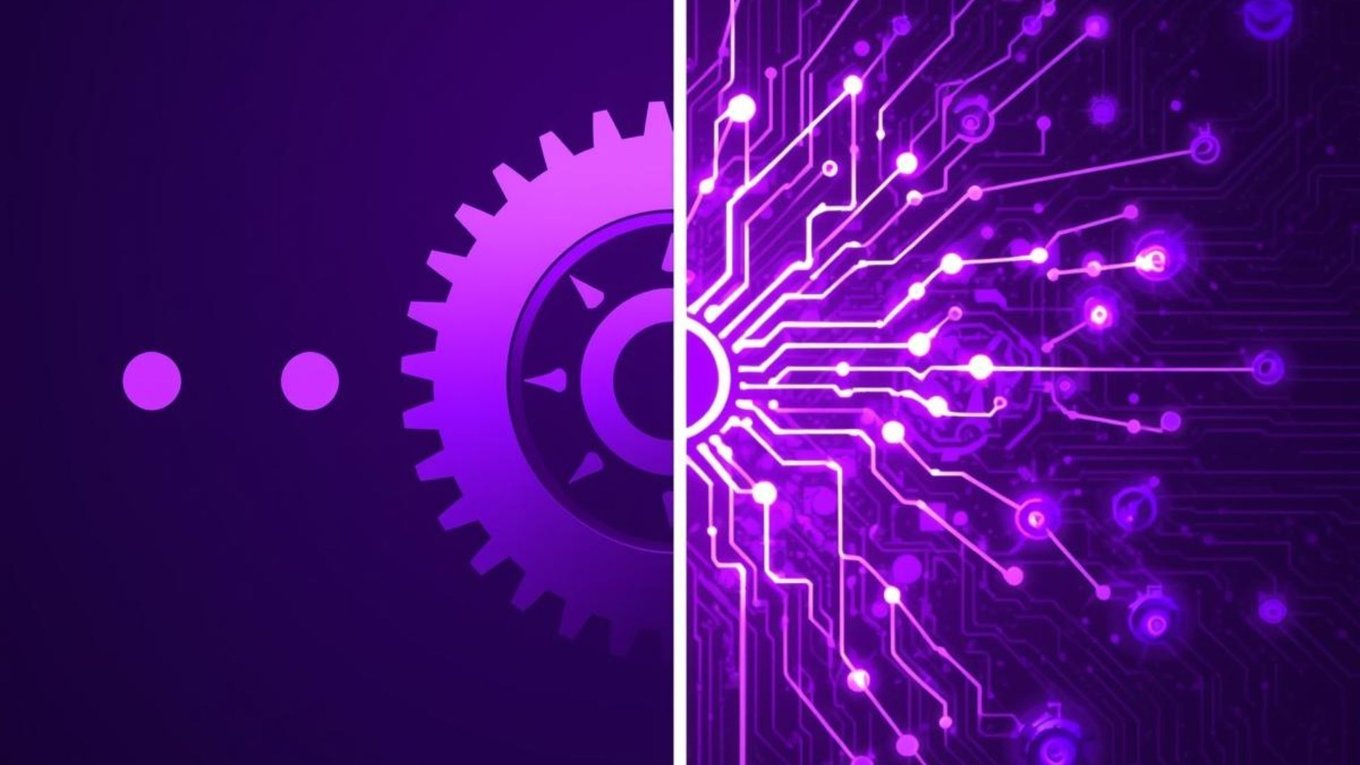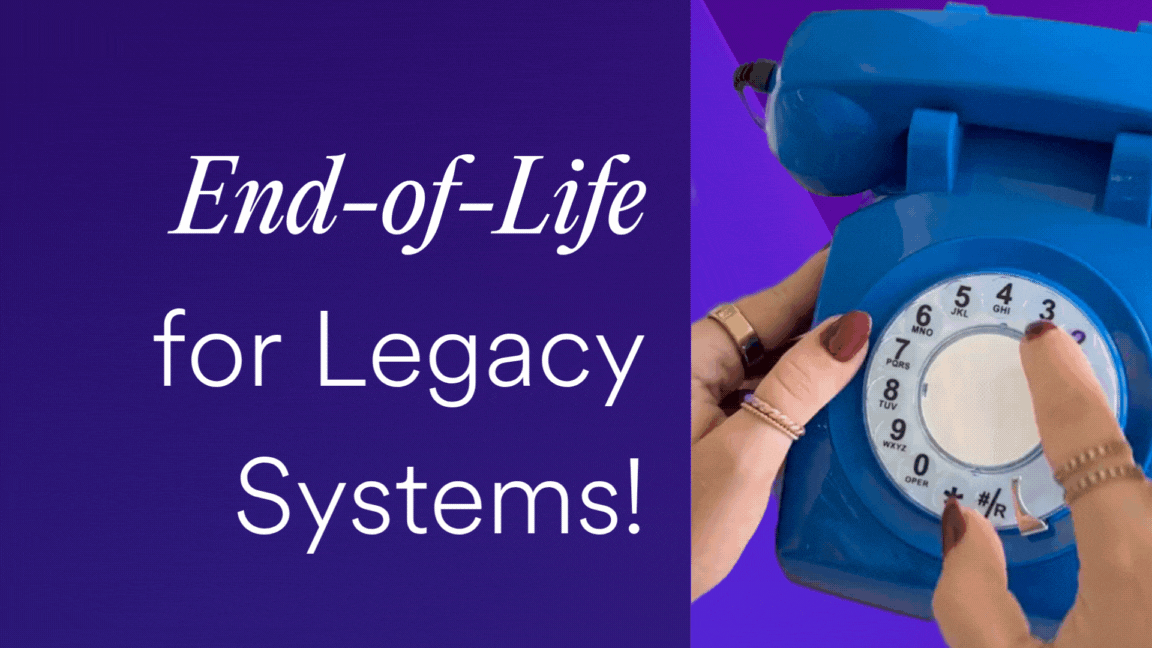Hyper Personalization vs. Personalization in CX: Which is Right for 2026?
Understanding the difference + FREE fact sheet

Table of Contents
You've likely heard the terms “personalization” and “hyper personalization” used in business discussions. They sound alike, but the difference between them marks a huge shift in Customer Experience (CX). Understanding this debate is the first step to connecting with customers on a much deeper level.
What exactly is personalization in CX?
Think of personalization as the friendly barista who remembers your name and usual coffee order. It's a warm gesture that shows they're paying attention. In a business context, it involves using historical customer data to make interactions more relevant and familiar.
The data for this approach is often straightforward and static: a customer's name, their purchase history, and basic demographics. Personalization works by grouping your audience into segments based on shared traits (e.g., all customers in Manchester or everyone who bought a certain product). The communication is then directed at the group, not the individual.
How personalization works
Personalization functions using a rule-based system that draws on past behavior. This approach moves away from generic, one-size-fits-all messaging.

For instance, if a customer buys a new smartphone, a preset rule might trigger an automated email suggesting a protective case. This method is effective—research by McKinsey shows it can increase revenues by 5-15%—but it has clear limitations. Because it's based on past actions, it cannot keep up with a customer's current intent or context. It's a solid start, but it lacks the immediacy modern consumers expect.
Examples of personalization you see every day
-
Receiving an email with your first name in the subject line.
-
Seeing product carousels titled “Customers who bought this also bought...”
-
Getting a special discount code sent during your birthday month.
-
A website remembering your language or currency preference on a return visit.
These actions make the customer journey feel more considered and less anonymous. They signal that a company recognizes you, but they don't quite capture the full picture of who you are or what you need in that exact moment.
Personalization in the contact center
In the contact center, personalization translates to intelligent routing. When a customer calls, the system recognizes their number and uses static, stored attributes (like a customer's account tier or preferred language) to route the call. This directs the customer to the right type of queue (e.g., the “Premium Support” queue or the “German-speaking” queue). This is efficient, but the agent still has to greet the customer and ask, “How can I help you today?” The context of the call is still a mystery.
So, what's the big deal about hyper personalization?
Hyper personalization elevates the customer experience to an entirely new plane. If personalization is the barista remembering your name, hyper personalization is the barista noticing you look tired after a long meeting and making your favorite coffee and suggesting a croissant without you even asking.
Stop Guessing, Start Anticipating Customer Needs
Unsure where to focus your efforts? Speak with our experts to define clear, high-impact steps for your contact center.
This approach focuses on creating a true one-to-one experience for every customer in real-time. It uses a rich mix of behavioral and contextual data, powered by Artificial Intelligence (AI) and Machine Learning (ML) to anticipate your needs. The goal is to be fully aware of the customer's immediate context and deliver something immediately relevant.
To see how powerful this concept is, let's explore a scenario where real-time behavioral data transforms a moment of customer frustration into a moment of effortless resolution.
| Feature | Standard personalization | Hyper personalization |
| Input | Touches keypad or speaks into IVR menu. | Speaks naturally to an AI agent instead of suffering through a classic IVR. |
| Data Used | Stored language preference (static). | Spoken Intent (Topic) and Sentiment (Emotion) (dynamic, real-time). |
| Routing | Routes to Queue (e.g., German Queue). | Routes to Specific Agent (e.g., Agent known for de-escalation). |
| Outcome | Customer has to explain why they are upset. | Agent immediately addresses the emotion and the issue (e.g., “I see you're very frustrated about this fee, let's get it sorted for you”). |
Understanding hyper personalization
Hyper personalisation is the application of advanced technology. It draws data from a wide array of sources simultaneously: website clicks, mobile app interactions, real-time location, and transactional data.

All this information is channeled into advanced AI and machine learning algorithms. These systems build a dynamic, constantly updating profile for each user. The experience is then adjusted on the fly, making each interaction unique to that specific moment. This depth of understanding facilitates what feels like a genuine, predictive conversation, driving powerful emotional connections and lasting customer loyalty.
Why is everyone talking about hyper personalization now?
The movement toward hyper personalization is a direct response to a fundamental shift in customer expectations. Modern consumers are inundated with choices, leading them to demand more: they don't just want you to know their name; they want you to anticipate their needs. This type of empathetic, real-time understanding builds significant trust and makes a brand stand out.
Furthermore, the technology required has become more accessible. The widespread availability of big data, affordable cloud computing, and sophisticated AI models means that a hyper personalization strategy is now achievable for many businesses, not just tech giants.
Comparison: hyper personalization vs. personalization in CX
Let's place both strategies side-by-side to highlight the fundamental differences in method and impact.
| Category | Personalization | Hyper personalization |
| Action | Intelligent routing based on static data. | Anticipatory routing based on real-time data and intent. |
| Scenario | A customer calls your insurance company. The system recognizes their number and routes them to the “French-speaking” queue based on a language preference stored years ago. | The system notes the customer was just on the website's claim form page and failed to submit it moments ago. It bypasses the IVR, routes the call directly to a claims specialist who has the relevant form open, and the agent greets them proactively: “Hello, Mr. Denis, I see you were having trouble submitting your online claim—how can I help you finish the process?” |
| Result | The customer still has to explain who they are and why they are calling, wasting 1-2 minutes. | The customer feels understood, eliminates all queue time and explanation, and moves immediately to resolution, creating a moment of extreme loyalty and low effort. |
The difference is profound. One approach offers a reasonable suggestion based on history. The other provides a deeply insightful recommendation based on your immediate situation and inferred intent.
The benefits of hyper personalization are hard to ignore
Adopting this strategy profoundly impacts business performance:
-
Increased customer loyalty & retention: When customers feel truly understood, they are far less likely to be tempted by a competitor's offer, leading to a higher Customer Lifetime Value (CLV).
-
Higher conversion rates: By presenting the most relevant offer to the right person at the exact right moment, the path to purchase becomes seamless and intuitive.
-
Significant uplift in engagement: Every single interaction is highly relevant to the individual's immediate context, which forges a stronger, more emotional connection.
💡 Good to know 💡
The core distinction between personalization and hyper personalization is the use of real-time contextual data to make a predictive decision in the moment.
Challenges on the road to hyper personalization
While the rewards are substantial, achieving hyper-personalization requires overcoming some significant technical and ethical challenges. The most prominent lies in data management.
-
Data integration: Most organizations still grapple with data silos. Achieving a single, unified view of the customer often requires a substantial integration project, typically relying on a Customer Data Platform (CDP).
-
Technology investment: You need platforms and tools to collect, process, analyze, and act upon real-time data streams.
-
Privacy and trust: Collecting and using large volumes of personal data requires an unwavering commitment to ethical practices and transparency. Customers must trust you are using their data to improve their experience, not to exploit them.
The good news is that these challenges—data fragmentation, technology sprawl, and security risk—can be addressed with the right architectural approach. For many organizations, the solution lies in a unified platform that integrates seamlessly with their existing IT strategy, transforming the roadmap from a costly overhaul into a focused integration project.
How Luware’s One-Platform approach solves the hyper personalization challenge
The journey to hyper personalization is difficult, but it doesn't have to be a costly overhaul. Luware Nimbus was designed specifically to eliminate the three major roadblocks facing organizations today: data integration, technology investment, and trust.
1. Eliminating data silos and achieving the unified view
Hyper personalization fails when customer data is trapped in silos (CRM, billing, support history). Luware Nimbus solves this with a robust one-platform approach that offers a complete view of the customer journey from a single point of entry.
Instead of relying on a separate, expensive Customer Data Platform (CDP), Nimbus integrates with your existing ecosystem to consolidate information where your agents work—in Microsoft Teams. This integration is made possible through flexible endpoints designed for the contact center:
-
Conversation Context (CRM Pop-Ups): Immediately display relevant customer records, web pages, or CRM data on an agent's screen the moment a service call arrives. This gives the agent context, not guesswork.
-
Power Automate Triggers: Listen to events within Nimbus (like a call ending or a task being created) and automatically trigger workflows in other systems. This ensures data is synchronized and actions are taken instantly.
-
OData API & Web Hooks: Access comprehensive reporting data or execute specific external services (like triggering a personalized SMS) using data from the call, enabling deep analytical reporting and seamless automation across your landscape.
Solve the hyper personalization data challenge
Connect with our platform experts to see how a unified approach can eliminate data silos and build your future CX strategy.
2. Maximizing existing Microsoft investments
For organizations committed to a Microsoft strategy, Nimbus drastically reduces the need for expensive new tools and extensive agent training. Nimbus is a native contact center solution for Microsoft Teams. This means:
-
No new desktop tools: Your agents use the familiar Teams interface for all calls, routing, and post-call work.
-
Unified Interface: Non-Microsoft tools (CRMs, ticketing systems) are integrated directly into the Teams experience, giving agents all the necessary information without switching applications.
This seamless integration minimizes training costs and accelerates user adoption, transforming your current Microsoft environment into a powerful hyper personalization engine.
3. Building trust through security and compliance
The foundation of trust for any hyper personalization strategy is data security. Luware Nimbus operates under the rigorous security standards established by Microsoft. We are committed to maintaining the highest level of security and compliance:
-
Microsoft security: Inheriting the security and compliance frameworks of the Microsoft Teams platform ensures your data is protected by global industry-leading standards.
-
Ongoing audits and compliance: We undergo yearly audits to ensure we remain compliant with stringent data protection regulations, giving you and your customers peace of mind.
Is personalization obsolete?
No. For many businesses, basic personalization remains a valuable and necessary first step.
Starting here allows a company to build a solid foundation: it's an opportunity to begin collecting and organizing customer data, understanding customers through segmentation, and seeing the positive impact of a more targeted approach.
Consider it an evolutionary path: personalization is where you begin, and hyper personalization is the ultimate destination. You don't have to make the leap overnight, but it should be a clear goal on your strategic roadmap for the future.
Conclusion
The conversation about hyper personalization vs. personalization in CX isn't about choosing one over the other; it's about understanding the progression of customer engagement.
Personalization is the foundation, using what you know about customers to make them feel recognized and valued. Hyper personalization is the future, using real-time insight and predictive analytics to make customers feel completely understood on an individual level. It is the difference between a good customer experience and an exceptional one.
Shifting your focus from broad segments to individual, real-time moments is crucial for shaping your company's growth and competitive advantage for years to come.



